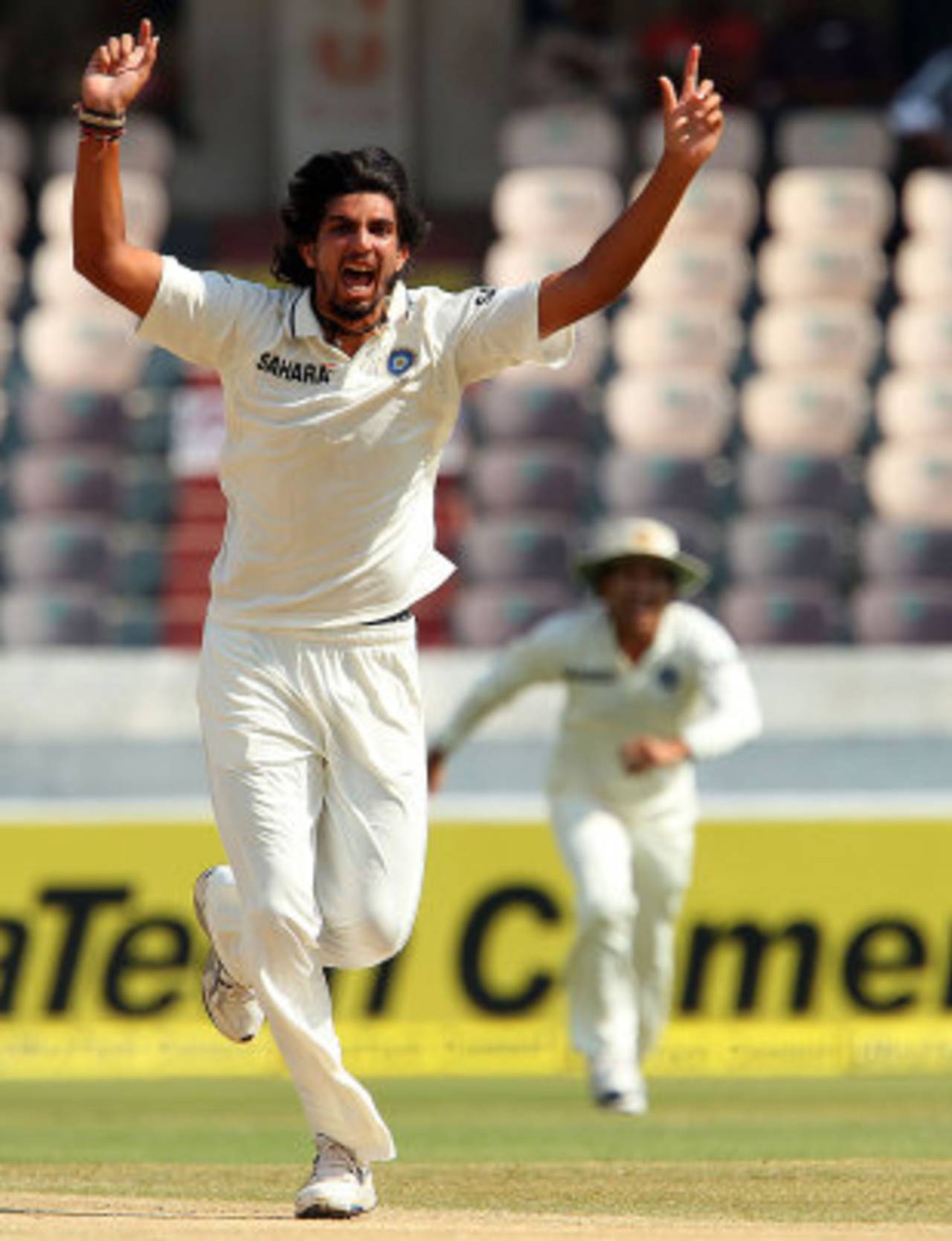Job of seamers in India to contain runs - Ishant
Ishant Sharma has said his role as a seamer in Tests in India has been to contain the flow of runs so that the spinners can attack from the other end
Sharda Ugra
21-Mar-2013

Ishant Sharma and Bhuvneshwar Kumar have claimed 10 of the 59 Australian wickets to have fallen in this series so far • BCCI
The fringe men in India's romper-stomper of a performance in the series against Australia are medium-pacers Ishant Sharma and Bhuvneshwar Kumar who, between them, have picked up only 10 of the 59 Australian wickets to fall, at an average of 40.4 and a headache-generating strike rate of 80.4. These are numbers that would give palpitations to captains and coaches in many countries, but in India the seamers understand why they have, quite literally, been shown their place.
The day before the fourth and final Test in Delhi, Ishant turned up to speak to reporters and explained his role, if it required him chugging along in the sidelines and playing support to the new man Bhuvneshwar. "Your role in India is to contain the flow of runs so that the spinners can attack from the other end. You've got to hunt in a pack and bowl in partnerships like how you bat in partnerships. When you bowl in partnerships, you may not get wickets but the bowler at the other end gets wickets."
Ishant said he had switched new-ball duties with Bhuvneshwar, who made his Test debut in Chennai and has taken six wickets at 31.16 in the series so far. "I feel Bhuvi's bowling is different to mine. Bhuvi is more effective with the new ball because he can swing it both ways. I don't get much swing in Indian conditions and I have to wait for the ball to get a bit old so that it reverse-swings… only after that I can attack, but till then my role is to contain. Everyone knows their role and this is the best part of our team."
Pitches in the series so far have been bare and dry, Chennai and Hyderabad putting batsmen's abilities to play the turning ball under strict examination. The Mohali track was undeniably the best for batting and offered more help to the seamers. Ishant said, "As you saw in the last three Test matches there was a lot of help for the spinners, so I have got very less bowling. It was only in the last match in Mohali that I got nearly 30 overs but before that I didn't get much bowling."
For the seamers, Ishant said maintaining the balance between attack and defence and using the best bowler in the most suitable conditions was important. "If you are bowling first then the ball does not swing that much because conditions are not that favourable. So you have to wait for the ball to swing more, then you can attack but until then you have to be defensive."
The moment to attack came when the ball got a little old and reverse-swing of the kind that Ishant can put into use came into play. "You also have to wait for the ball to reverse-swing so you can have fielders in attacking positions… These factors are very important when considering when to attack and when to defend."
Ishant, who plays for Delhi in the Ranji Trophy, was speaking at his home ground the Ferozshah Kotla, where he would miss playing for India, together his team-mate, Shikhar Dhawan, who scored the fastest Test century on debut in Mohali but fractured his left hand.
The contrasts between India's performances in the away Tests in England and Australia in 2011 and early 2012 and Australia's woeful performances on their 2013 tour of India had, Ishant said, reiterated the advatages of home conditions, "When we went to Australia we struggled a lot and everybody said we can't play away from home and now you can see that even Australia can't play here. So the advantage of home conditions is quite big. Our home conditions suit spinners and Australia is weak against the spinners so that has been a big advantage for us."
Sharda Ugra is senior editor at ESPNcricinfo